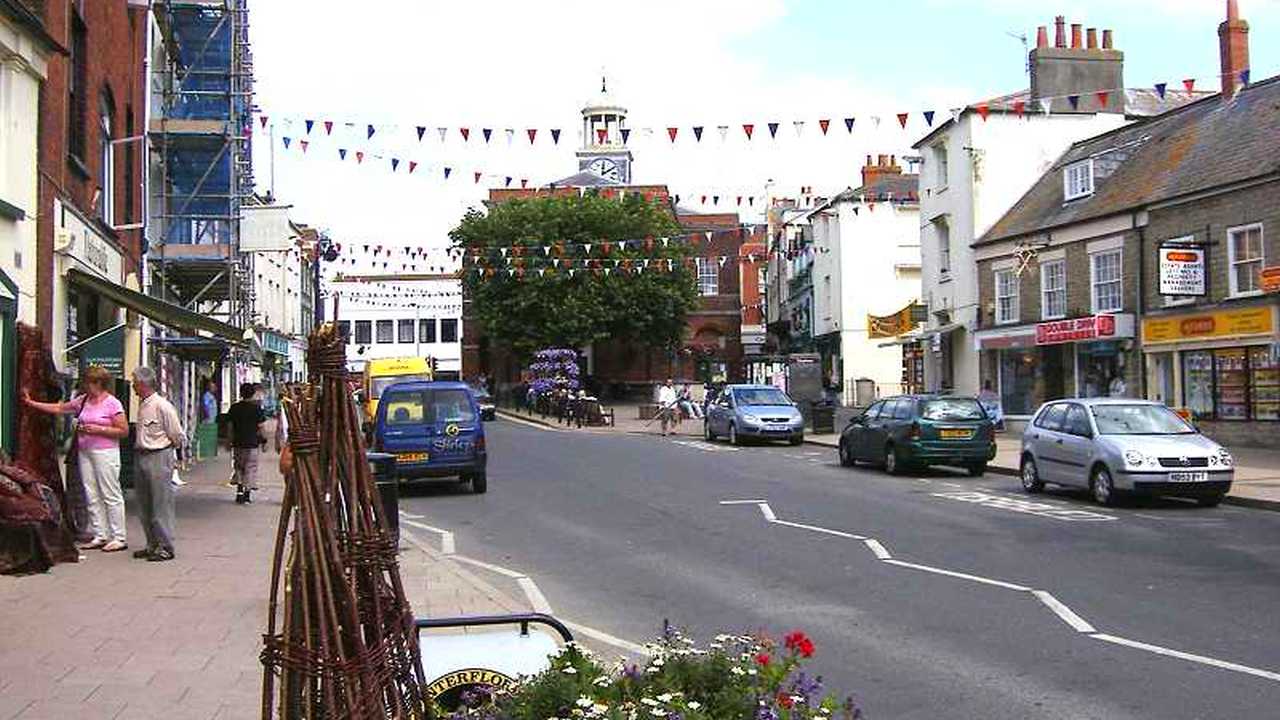Bridport, Dorset
Bridport is a vibrant and colourful town set amongst the West Dorset hills. Made famous as the location for Channel Four’s ‘Return to River Cottage’ series with Hugh Fearnley-Whittingstall, Bridport is one of West Dorset’s most welcoming towns and is an ideal place to browse and shop.

Bridport’s History & Heritage
Dating from the 9th and 10th centuries, Bridport stands at the point where the rivers Brit and Asker meet. In the early 13th century, Bridport had become the country’s most important rope making centre. This was followed by net making, and it was upon these two industries that the town’s fame and fortune was built.
Things To See in Bridport Dorset
Use this map of Bridport and the descriptions provided below to guide you around the main points of interest in Bridport.
The Chantry (1) dates from the late 13th or early 14th century and is the oldest secular building in Bridport. In 1368, it was endowed as a chantry – the home of a priest – and in the attic there was a pigeon loft used to provide fresh meat to supplement the priest’s diet and income. The Chantry is not open to the public.

Further along South Street is the Parish Church of St Mary. Features of interest inside include the 700-year-old stone effigy of a recumbent knight, the ensign of HMS Bridport and the coat of arms of Queen Victoria’s father, the Duke of Kent. The coat of arms commemorates the resting of the Duke’s coffin whilst en route to Windsor after his death in Sidmouth. There is also a brass plaque commemorating the skirmish outside The Bull Hotel in East Street during the Monmouth Rebellion of 1685. The obelisk to Dr Roberts can also be seen in the churchyard. The church is open to visitors from 9am to 6pm daily, or dusk if earlier.
Bridport Museum (2) has seasonal opening times. Inside you can marvel at the objects left by the Roman army at nearby Waddon Hill, try on a Roman toga and discover the story behind a Bridport medicine that turned out to be a deadly poison. Follow the development of Bridport’s rope and net making industries and find out the meaning of the saying ‘to be stabbed by a Bridport Dagger’. Test your sense of smell and see if you can recognise the aromas of products that played an important part in Bridport’s history.
The Borough Gardens (3) are opposite Bucky Doo Square, a curiously named square that forms the focal point of the town. In the centre of the square is a magnificent carved centrepiece in Portland and Purbeck stone by local stone mason Karl Dixon.
Off Bucky Doo Square is Bridport Arts Centre (4), which was formerly a Wesleyan Methodist Chapel with architecture dating from 1838. The Arts Centre always has a full programme of activities.

At the convergence of South, East and West Streets stands the imposing Town Hall building, which dates from 1786. The building is on the site of an earlier chapel and was originally designed to accommodate butchers’ stalls on the ground floor under open arches. It was later used to house the town’s fire engine.
Proceeding down East Street, you come to The Greyhound, a former coaching inn. There has been a tavern on the site of The Greyhound since the 14th century and it has been called The Greyhound since the 17th century. Further along is The Bull Hotel, which was a 16th century coaching inn. In 1685, the Duke of Monmouth’s forces attacked the King’s militia in Bridport. Colonel Venner was shot and wounded from the now bricked-up window of The Bull Hotel.

Across the road is the Chapel in the Garden, which dates from 1794 and which is tucked away at the end of a garden. Walking back up East Street towards the Town Hall you will see a shop with distinctive bow windows. The shop stands on the site of the Old George Inn, where Charles II was said to have taken a meal before fleeing from the Parliamentarians up Lee Lane to safety. Later, in 1804, it became a pharmacy set up by a local man, Dr Giles Roberts. Dr Roberts became famous for inventing the ointment known as ‘the poor man’s friend’, a general cure for all.
Along West Street, just before West Bridge, stands the red brick building known as West Mill. It is a late 19th century flour mill on the site of a 15th century hemp boiling mill. Where West Street becomes West Allington is R J Balson & Son, which is reputed to be England’s oldest family butcher.
Palmers Brewery in Bridport
Palmers Brewery is one of the few traditional breweries left in Britain. Take a tour to see how traditional ale is brewed, sample the famed ales and receive a souvenir certificate of your visit. Guided tours are seasonal and should be booked through the Palmers Wine Store. Call 01308 427500 for more information.
BRIDPORT HOLIDAY FACT FILE
Map of Bridport
Download a free map of Bridport town centre (PDF, 301 kB) to help you find your way around the town.
Bridport Tourist Information Centre
47 South Street, Bridport, Dorset DT6 3NY
Tel: 01308 424901
Email: [email protected]
How to reach Bridport by public transport
Motorway services from London and the North now make West Dorset easily accessible by road and there are regular coach services from most parts of the country. There are also main line train services to Dorchester and Axminster with coach and taxi services available at these stations. A comprehensive local bus service also operates from Bridport across Dorset and further afield.





